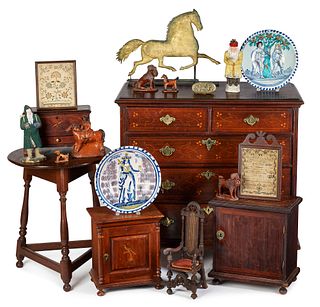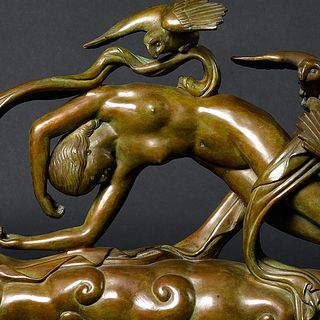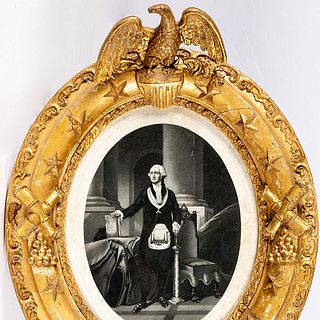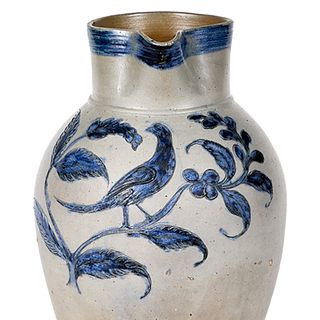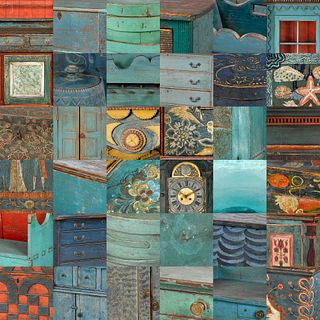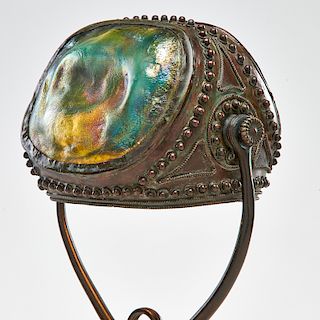Shaker Boxes
Shaker oval lapped boxes were made throughout the United States in the 19th century, but two styles were uniquely to Shaker tradition.
"The first is made with a lap where the edge is cut like a sawtooth with the length of the teeth varying from about one fourth of an inch to an inch and a half. This sawtooth lap is uncommon and found almost exclusively on boxes that were made at Alfred, Maine," wrote Charles R. Muller in The Shaker Way.
"The second peculiarly Shaker design is the Gothic lap wherein the edge of the lap is cut in a series of Gothic arches making from two to six fingers," Muller continued. "The Shakers discovered that a straight seam held with a series of nails did not allow for shrinkage. Therefore, the edge of the lap had a tendency to buckle between the nails or split at the nails. The use of fingers prevented splits and became the standard of production among Shaker oval box makers so that boxes made in 1830 have the same form and durability as those made more than a hundred years later."

Cowan’s Auctions, Inc. Graduated Stack of Painted Shaker Boxes Sold in October, 2010 for $3,900
Shaker boxes typically have pine tops and bottoms paired with maple sides, although examples with cherry and oak sides are known. After cutting the wood, the artisan steamed or soaked the sides of the boxes in water to make them pliable enough to bend. Tacks or wooden pegs held the tops and bottoms in place. Copper tacks, or occasionally iron tacks, secured finger laps. Some of the boxes were painted, and original paint remains a significant factor in the value of Shaker boxes.
In addition to creating pieces for their own use, Shakers made oval lap boxes to sell to those outside their communities. The boxes were used for storing a variety of smalls, from sewing goods to foodstuffs. Boxes were made in graduated sizes. Around 1833, sizes were standardized and numbered; eleven as the smallest. Prices today are a far cry from what they used to be.
"In 1805, they were sold for about $1.25 a nest," noted Muller. "At that early date, a nest usually consisted of twelve boxes while in later years, it was nine or seven boxes. A nest of eleven boxes could still be purchased at the beginning of the 20th century for $5." This is quite a contrast to modern prices; authentic Shaker oval boxes are selling between $500 and $2,000 at auction.
Shaker oval boxes are prized today for the patience and skill required to make them. Modern collectors appreciate the Shaker’s creed of “beauty is utility,” with the emphasis on practicality and a result that is both useful and beautiful.
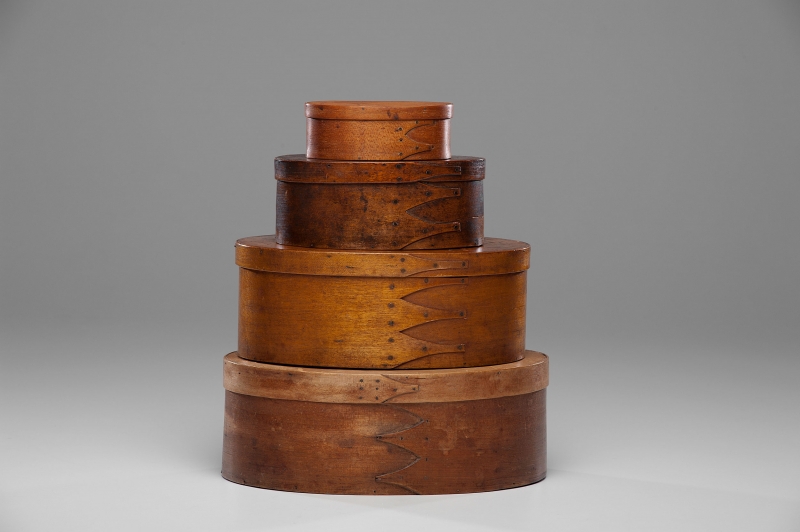
Cowan’s Auctions, Inc. Shaker Oval Bentwood Boxes Sold in March, 2014 for $900
- The Estate of Jane Stanton Hitchcock: A Life in Art, Books, and Ideas
- The Art of Cut Glass: A Brief History and Collector’s Guide
- Artist Spotlight: Ruth Henshaw Bascom; A Pioneering Voice in American Folk Art
- Winter Warmth & Timeless Storage: The Enduring Appeal of the Antique Blanket Chest
- Portraits: A Timeless Conversation Between Artist and Subject
- The Artistry Beneath Your Feet: A Guide to French Art Deco Rugs
- Artist Spotlight: Marco Olivier, Emotion, Movement & Sculptural Expression
- The Timeless Allure of Cameos: Art, History & Auction Highlights
- A Buyer’s Guide to Diamonds: Understanding the 4 Cs
- Artist Spotlight: KAWS, A Contemporary Icon of Street Art and Collecting



 EUR
EUR CAD
CAD AUD
AUD GBP
GBP MXN
MXN HKD
HKD CNY
CNY MYR
MYR SEK
SEK SGD
SGD CHF
CHF THB
THB

